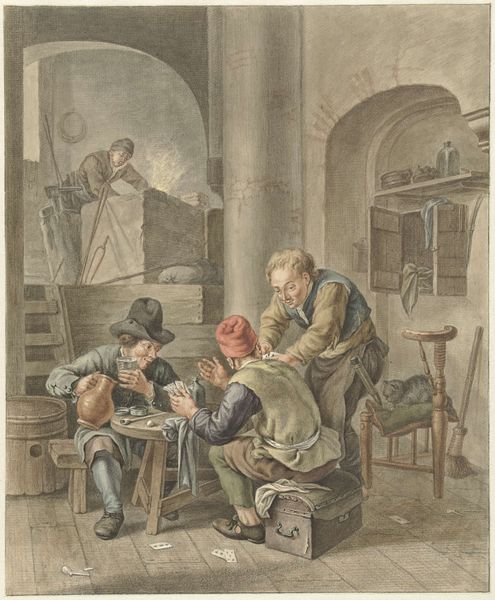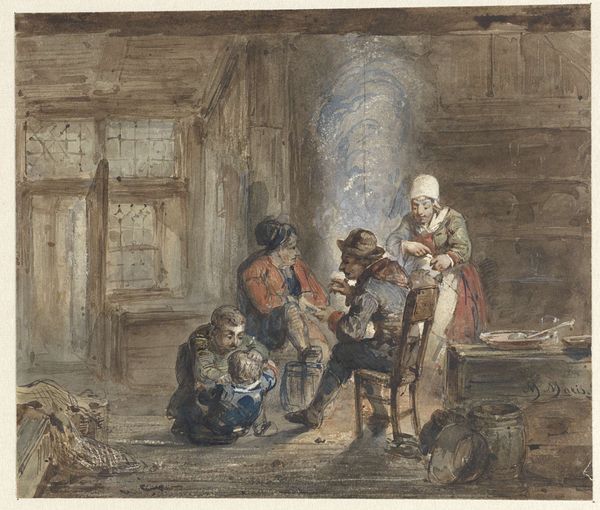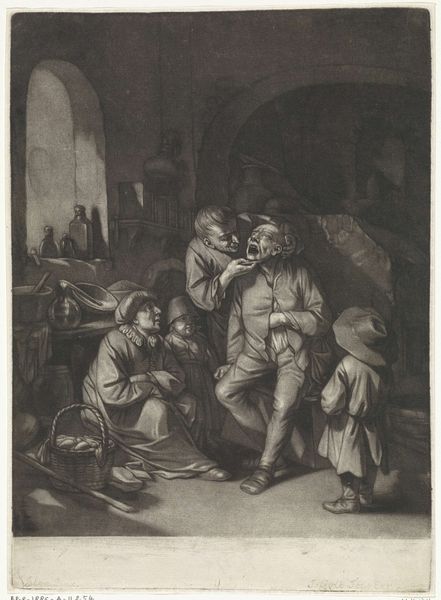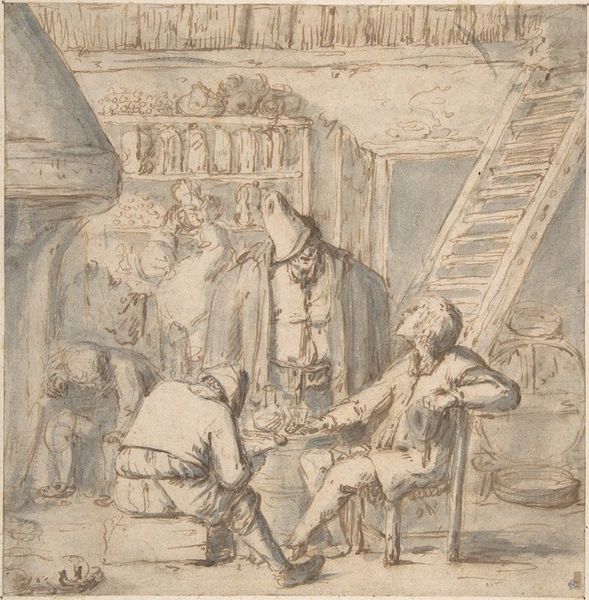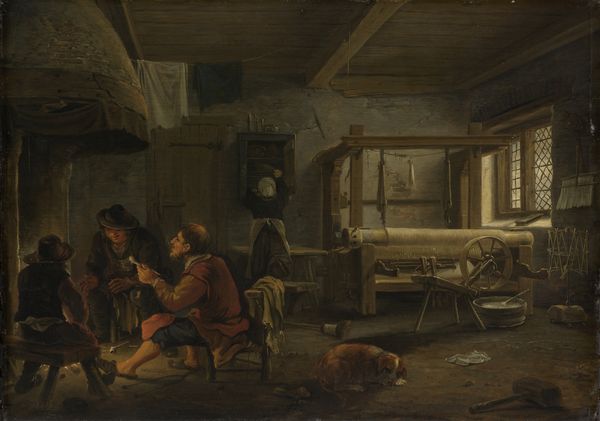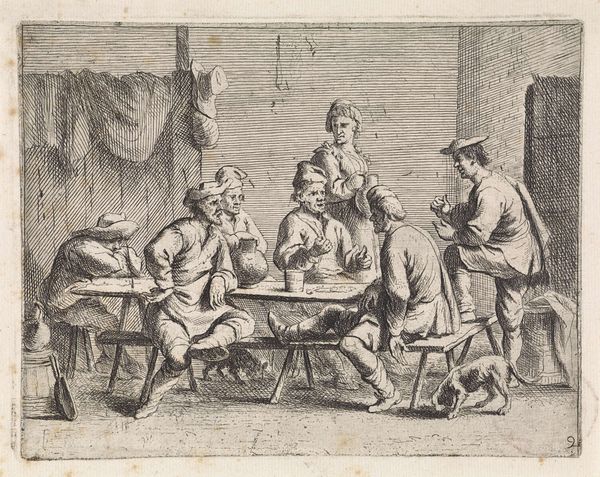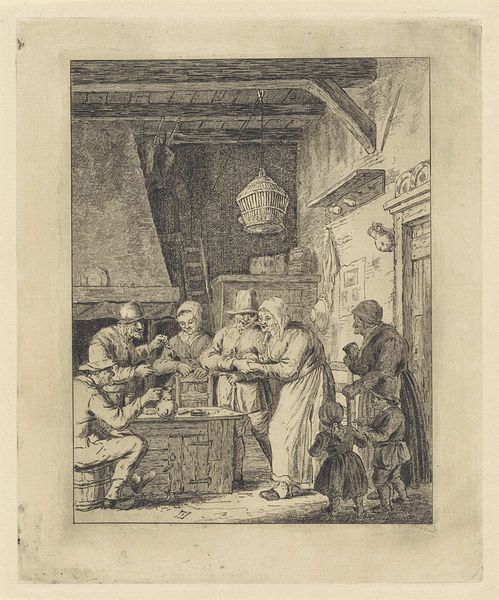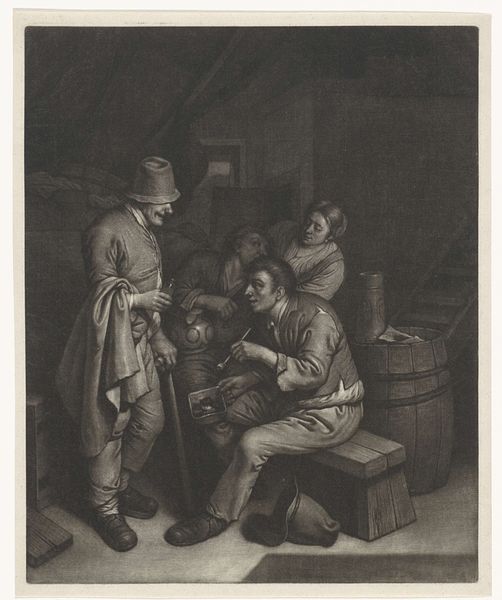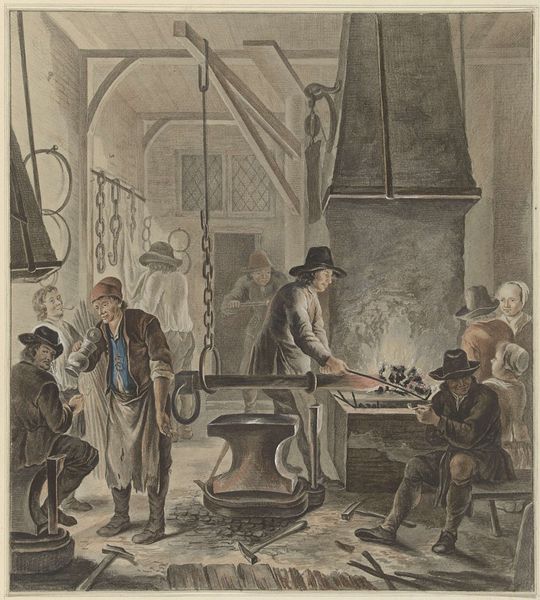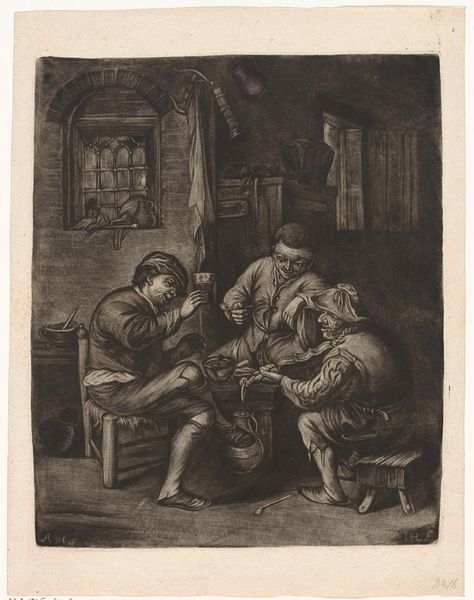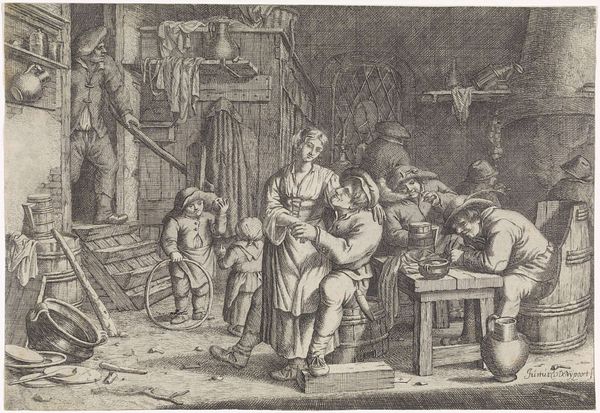
Dimensions: height 388 mm, width 320 mm
Copyright: Rijks Museum: Open Domain
Editor: We are looking at "De Taveerne," which translates to "The Tavern," an early 18th-century drawing by Abraham Delfos, currently housed in the Rijksmuseum. It's created with pen, colored pencil, and watercolor. It is somewhat a dark piece with men engaging at leisure and their focus elsewhere. How do you interpret this work from a formal perspective? Curator: Primarily, my focus gravitates towards the composition's inherent elements. Note the contrasting light and shadow which carve out distinct spatial relationships. The architecture looms in the background and pushes to confine the individuals within its parameters, thereby isolating them. There is a stark distinction of depth that serves to distance. What compositional elements immediately draw your attention? Editor: I am particularly interested in how Delfos uses the pen to capture the textural surfaces. Curator: Precisely! Observe how he employed the pen strokes to give form to texture, differentiating fabrics from flesh and wood, creating visual tactility through artifice. Furthermore, reflect on how the limited color palette emphasizes the importance of line and shape, directing the observer's gaze through this intricate and deliberately crafted pictorial space. Editor: It's fascinating how concentrating on formal components brings out such a complex image from seemingly simple scenes of the Baroque. Curator: Indeed. By appreciating these aspects we decode artistic decisions impacting how a piece speaks. A work's visual language relies on interlocked elements. Editor: Focusing on the visual and theoretical composition opened the work to reveal many underlying artistic applications that dictate and convey a message about isolation despite engagement. Thank you!
Comments
No comments
Be the first to comment and join the conversation on the ultimate creative platform.
